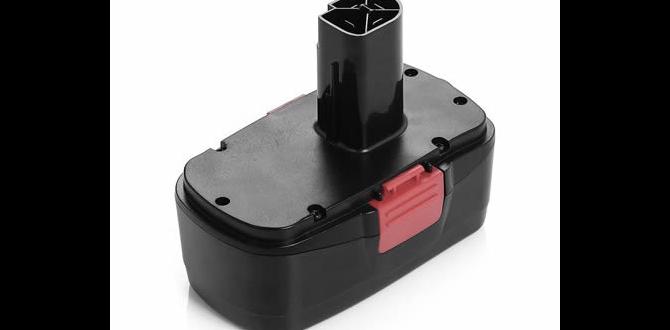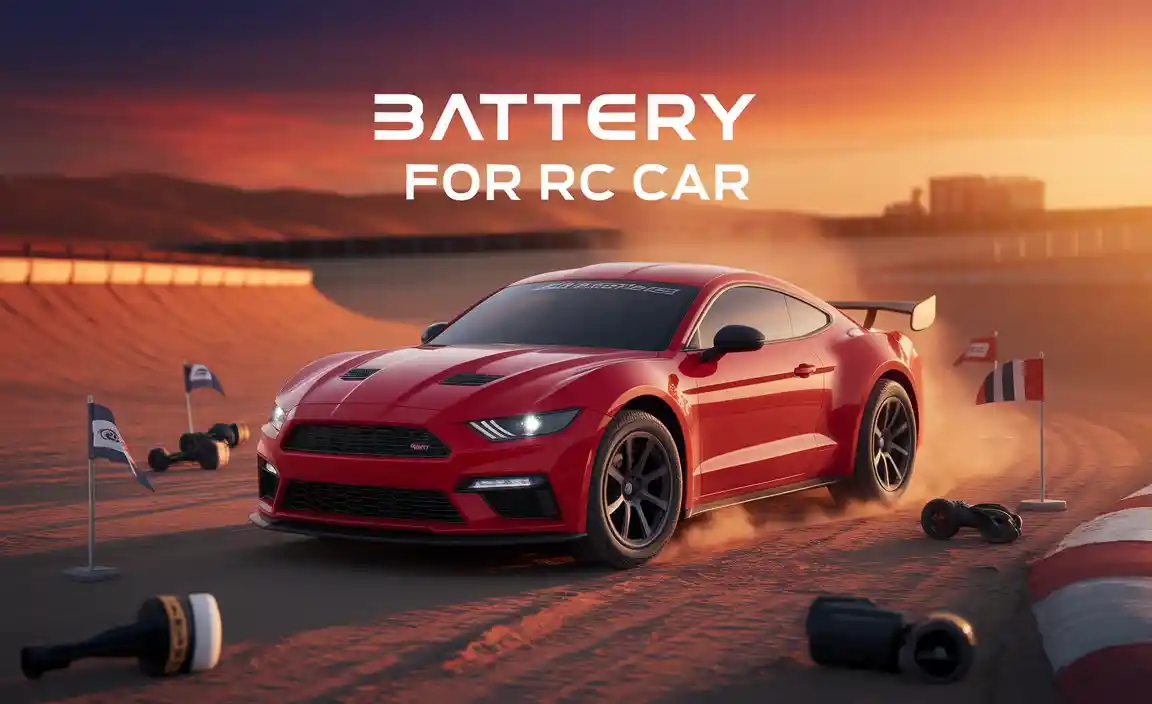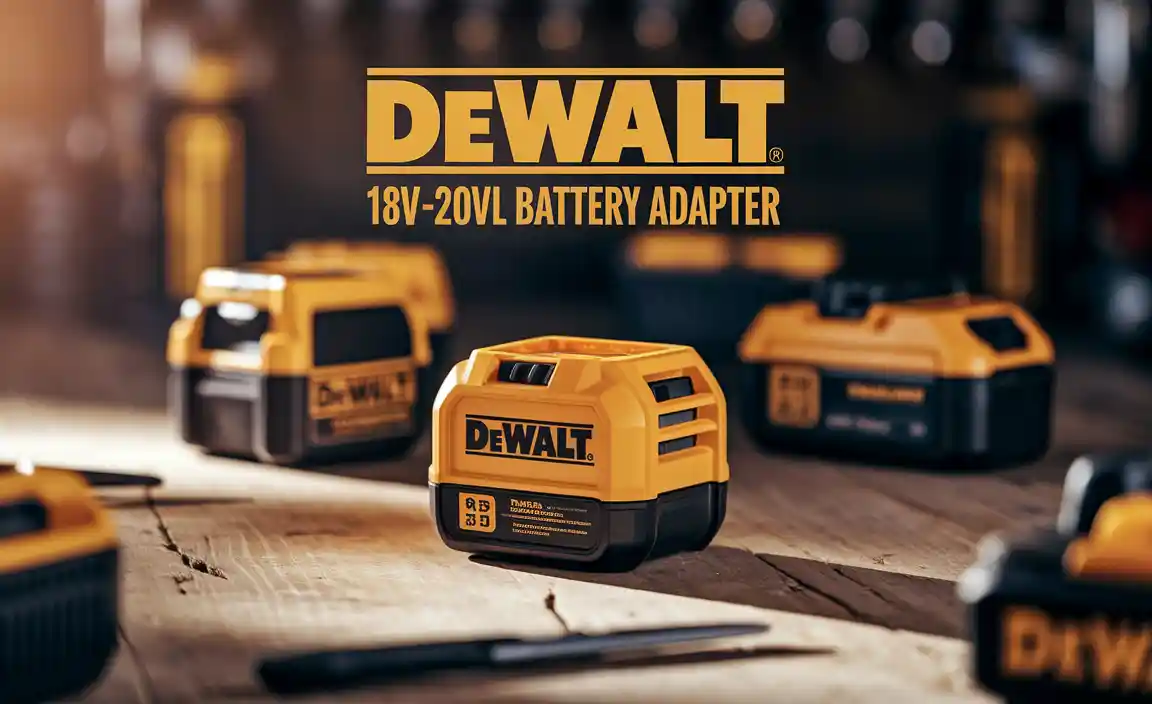Quick Summary: You can find a reliable, cheap stop-start battery for your car under $100. These affordable options offer excellent value, ensuring your car’s advanced start-stop system works smoothly without breaking the bank. We’ll guide you on what to look for and how to get the best deal.
Is your car’s engine cutting out and then starting up smoothly at traffic lights? That’s the stop-start system at work, and it relies on a special type of battery to do its job. When this battery starts to give up the ghost, it can be a real headache. You might notice the system working less often, or even warning lights popping up. Replacing it can seem pricey, but don’t worry! You don’t need to spend a fortune to get a good, reliable battery. This guide will show you exactly how to find a fantastic deal on a stop-start battery for less than $100. We’ll cut through the jargon and make it simple, so you can get your car back to its best without emptying your wallet. Get ready to save money and drive with peace of mind.
Your Guide to Affordable Stop-Start Batteries Under $100
The stop-start system in modern cars is a clever piece of technology. It saves fuel and cuts down on emissions by automatically shutting off the engine when you’re waiting at a red light or in traffic, and then restarting it instantly when you lift your foot off the brake. This system puts a lot of extra demand on the car’s battery. Unlike older batteries, stop-start batteries are built to handle these frequent deep drains and rapid recharges. They are incredibly robust, but when they eventually need replacing, the cost can sometimes seem a bit steep. However, with a little know-how, finding a quality, cheap stop-start battery under $100 is entirely possible. Let’s dive into how you can make that happen.
What Makes a Stop-Start Battery Different?
You might be wondering why you can’t just use any old car battery for a car with a stop-start system. The answer lies in the technology. Regular car batteries are designed for starting the engine once and then getting a steady charge from the alternator while driving. Stop-start systems, on the other hand, require batteries that can handle being discharged and recharged over and over again, often multiple times during a single journey. This requirement means stop-start batteries are made with different materials and in different ways.
There are two main types of batteries used in vehicles with stop-start technology:
- Enhanced Flooded Batteries (EFB): These are a step up from standard flooded batteries. They are designed for vehicles with basic stop-start functions and for drivers who do a lot of short trips. EFB batteries are more resilient to the demands of frequent engine starts and stops. They are generally the more affordable option for stop-start systems.
- Absorbent Glass Mat (AGM) Batteries: These are the more advanced option. AGM batteries use a special mat of spun glass to absorb the electrolyte. This construction makes them much more durable, able to handle more deep discharges, and more efficient at charging. They are typically required for vehicles with more complex stop-start systems, regenerative braking, or a higher number of electrical accessories. AGM batteries are usually more expensive than EFB batteries.
Most cars with stop-start systems will specify whether they need an EFB or an AGM battery. It’s crucial to replace your battery with the same type. Using the wrong type can lead to premature battery failure and potential damage to your car’s electrical system. Always check your car’s manual or look at your old battery for labels indicating ‘EFB’ or ‘AGM’.
Why Are Some Stop-Start Batteries So Expensive?
You’ve probably seen prices for stop-start batteries that go well over $100, $200, or even more. What’s driving these costs up?
- Technology: As we discussed, AGM and EFB technologies are more advanced and require more specialized manufacturing processes and materials. This naturally increases the production cost.
- Brand Reputation: Well-known brands often command higher prices due to their established reputation for quality, reliability, and customer service. You’re partly paying for that peace of mind.
- Vehicle Specifics: Some advanced vehicles with sophisticated electrical systems or battery management systems might require specific, proprietary batteries that are only available from the car manufacturer. These are often subject to dealership markups.
- Retailer Markups: Whether you’re buying from a dealership, a national auto parts chain, or a local garage, there’s almost always a markup to cover their overhead, staff, and profit.
But here’s the good news: the price isn’t always an accurate reflection of intrinsic value, especially if you do your homework. Many reputable manufacturers offer excellent EFB and even some AGM batteries that meet the demands of stop-start systems at a much lower price point.
Finding a Cheap Stop-Start Battery: Where to Look
The key to getting a cheap stop-start battery under $100 is knowing where to search and what to look for. It’s not about finding a bad battery, but rather a value-packed one.
Here are some of the best places to find affordable options:
- Online Retailers: Websites like Amazon, eBay, and specialized online auto parts stores can be treasure troves. They often have lower overhead than brick-and-mortar stores, allowing them to offer competitive prices. You can often compare prices from many different brands easily. Be sure to check shipping costs and return policies.
- Independent Auto Parts Stores: While national chains might have set pricing, smaller, independent shops sometimes carry less common brands or have promotions that can lead to great deals. They might also offer more personalized advice.
- Warehouse Clubs: Stores like Costco or Sam’s Club often have their own branded batteries or carry specific lines that offer a good balance of quality and price. Their membership model can sometimes translate into savings for consumers.
- DIY Auto Parts Websites: Many websites specialize in selling car parts directly to consumers. These sites often feature a wide range of brands, including some lesser-known but perfectly adequate ones, that can fall well under the $100 mark for stop-start batteries. Examples include RockAuto, AutoZone (online deals), Advance Auto Parts (online deals), and many others.
When shopping online, always double-check the battery specifications against your car’s requirements. Look for the battery group size, terminal type, and crucially, whether it’s EFB or AGM. Don’t forget to read customer reviews – they can be incredibly helpful for gauging real-world performance and reliability.
Essential Features to Look For (Even on a Budget)
When you’re on the hunt for a cheap stop-start battery under $100, you still need to ensure it has the core features needed for your car’s system to function correctly and safely.
- Correct Type (EFB or AGM): This is non-negotiable. Your car’s manual or current battery will tell you which one you need.
- Appropriate Group Size: This refers to the physical dimensions of the battery and how the terminals are arranged. An incorrect size won’t fit, or could be dangerous. Common group sizes include 24F, 35, H6, H7, and others. Your car manual is the best source for this information.
- Sufficient Cold Cranking Amps (CCA): CCA measures the battery’s ability to start an engine in cold temperatures. While stop-start systems don’t stress the battery as much at startup as traditional systems, you still need enough CCA for your climate. Check your car’s manual for the recommended CCA rating.
- Adequate Reserve Capacity (RC): RC indicates how long the battery can supply power if the alternator fails. While not as critical for daily driving as CCA, it’s still a good indicator of overall battery health and capacity.
- Warranty: Even the cheapest batteries should come with some kind of warranty. Look for at least a 1-year free replacement warranty. A longer warranty (2-3 years) is even better and provides extra peace of mind, though it might push the price slightly higher.
- Reputable, Though Not Necessarily Famous, Brand: While you might not find premium brands like Optima or Odyssey in the sub-$100 category, there are many solid manufacturers that produce reliable batteries. Brands like DieHard (often found at Advance Auto Parts), Duralast (AutoZone), or various house brands from online retailers can be excellent value.
Consider brands that clearly state their batteries are designed for stop-start applications. This ensures they’ve been engineered to meet the specific demands of these systems.
Comparing EFB and AGM Batteries Under $100
If your car has a basic stop-start system and your manual doesn’t explicitly call for AGM, you might find excellent EFB batteries well under $100. These are often the sweet spot for affordability and adequate performance. AGM batteries are less common in this sub-$100 price range, especially for larger sizes, but they do exist if you hunt for deals from less premium brands or during sales events.
Here’s a general idea of what you might expect to find:
| Feature | EFB Batteries (Under $100) | AGM Batteries (Under $100, if available) |
|---|---|---|
| Typical Price Range | $70 – $100 | Often $90+, can be found on sale below $100 for smaller sizes or less-known brands. |
| Technology | Enhanced Flooded Battery (more robust than standard flooded) | Absorbent Glass Mat (superior performance, durability, and charge acceptance) |
| Durability for Start-Stop | Good for basic systems and moderate use. | Excellent; handles deep cycles and frequent starts better. |
| Availability for Stop-Start | Widely available and often the most affordable stop-start option. | Less common under $100, but can be found. Essential for advanced systems. |
| Typical Warranty | 1-2 years | 1-2 years (sometimes longer for premium brands, but rare at this price point) |
DIY Battery Replacement: Saving Money and Gaining Confidence
Replacing your own car battery is a common DIY task that can save you a significant amount on labor costs. While it might seem intimidating, most modern cars make it quite straightforward. By following safety precautions, you can confidently swap out your old battery for a new, cheap stop-start battery.
Safety First! Essential Precautions
Batteries contain corrosive acid and can produce flammable hydrogen gas. Always prioritize safety:
- Wear Safety Glasses: Protect your eyes from any stray acid or debris.
- Wear Gloves: Protect your skin from acid.
- Work in a Well-Ventilated Area: Avoid enclosed spaces.
- Remove Metal Jewelry: Rings, watches, and necklaces can cause short circuits if they touch battery terminals.
- Keep Sparks and Flames Away: Batteries can release flammable gases.
- Never Let Tools Touch Both Terminals Simultaneously: This will cause a dangerous short circuit.
- Know Where Your Battery Disconnects Are: Some cars have a manual cutoff switch.
Tools You’ll Need
You likely already have most of these tools in your home toolbox:
- Wrench or Socket Set: You’ll need the correct size wrench or socket to loosen the battery terminal clamps and the mounting bracket. This is often a 10mm or 13mm, but can vary by vehicle.
- Battery Terminal Cleaner/Wire Brush: To clean corrosion from the terminals and cable clamps.
- Anti-Corrosion Spray or Grease: To apply after installing the new battery.
- Safety Glasses and Gloves: Reiterate their importance!
- Optional: Battery Terminal Pliers: Can make removing stubborn clamps easier.
- Optional: New Battery Terminal Covers: If yours are damaged or missing.
Step-by-Step Guide to Replacing Your Car Battery
Always refer to your car’s owner’s manual for specific instructions. The general process is as follows:
- Park and Prepare: Park your car on a level surface and turn off the engine and all electrical accessories. Engage the parking brake. Open the hood.
- Locate the Battery: The battery is usually found under the hood, often on one side. Some vehicles have it in the trunk or under a seat, which might require more steps to access.
- Identify Terminals: Locate the positive (+) and negative (-) terminals. The positive terminal is usually marked with a red cover or a plus sign, while the negative is often black or marked with a minus sign.
- Disconnect the Negative Terminal First: Using the correct wrench or socket, loosen the nut on the negative (-) terminal clamp. Once loose, carefully twist and lift the cable off the terminal. Tuck it aside so it doesn’t accidentally touch the terminal again. Disconnecting the negative first prevents sparks if a tool accidentally touches the car body while working on the positive terminal.
- Disconnect the Positive Terminal: Now, loosen the nut on the positive (+) terminal clamp. Twist and lift the cable off the terminal. Again, tuck it safely aside.
- Remove the Battery Mounting Bracket: Batteries are held in place by a bracket or strap at the base or top. You’ll need to remove the bolts or nuts securing this bracket. Keep these parts safe!
- Lift Out the Old Battery: Batteries are heavy! Lift with your legs, not your back. Carefully maneuver the old battery out of its tray. If it’s too heavy, ask for help.
- Clean the Battery Tray and Cables: While the battery is out, inspect the battery tray for any corrosion or debris. Use a wire brush or battery cleaner to thoroughly clean both the battery cable clamps and the terminals on the new battery. This ensures a good electrical connection.
- Install the New Battery: Carefully place the new, cheap stop-start battery into the battery tray, ensuring it’s oriented correctly with the positive and negative terminals in the same positions as the old one.
- Secure the Battery: Reinstall and tighten the battery mounting bracket securely. The battery should not move at all.
- Connect the Positive Terminal First: Place the positive (+) cable clamp onto the positive terminal of the new battery. Tighten the nut until it’s snug, but don’t overtighten.
- Connect the Negative Terminal Last: Place the negative (-) cable clamp onto the negative terminal. Tighten the nut. Connecting the negative last is a safety measure; if a tool were to touch both terminals, it would only cause a spark if the negative terminal is already connected to the car’s chassis.
- Apply Anti-Corrosion Protection: Apply a thin layer of anti-corrosion spray or grease to the terminals and cable clamps. This helps prevent corrosion and ensures good conductivity.
- Start Your Car: Close the hood and start your engine. It should start up without issues. You may notice the stop-start system taking a little while to “relearn” its settings or operating parameters.
- Dispose of the Old Battery Properly: Never throw your old battery in the trash. Most auto parts stores and service centers accept old batteries for recycling, and you may even get a small core charge refund. Many places that sell batteries are legally required to take old ones back. A helpful resource for battery recycling is the U.S. Environmental Protection Agency (EPA) website.
Post-Installation Checks
After replacing the battery, drive your car for a bit. You might notice that the radio stations need to be reset, or your car’s clock will need to be set. Some electronic systems might seem a little “off” for a short period as the car’s computer re-calibrates. This is normal. The stop-start system should begin functioning correctly within a few driving cycles.
Beyond the Car: Batteries in Your Everyday Tech
While we’ve focused on car batteries, the principles of understanding battery value apply across many technologies. Think about your phone battery, power banks, and laptop chargers. Just like with cars, you often don’t need to spend a fortune to get reliable power solutions.
- Phone Batteries: When your smartphone battery starts to degrade, consider whether a replacement is worth the cost versus a new phone. For older phones, affordable third-party replacement batteries (ensure they have good reviews and are for your specific model!) can breathe new life into them. Always use reputable chargers to avoid damaging the battery.
- Power Banks: A good USB power bank is a lifesaver for keeping your devices charged on the go. You can find decent 10,000 mAh power banks for well under $30. Look for reputable brands and check user reviews for charging speed and reliability.





